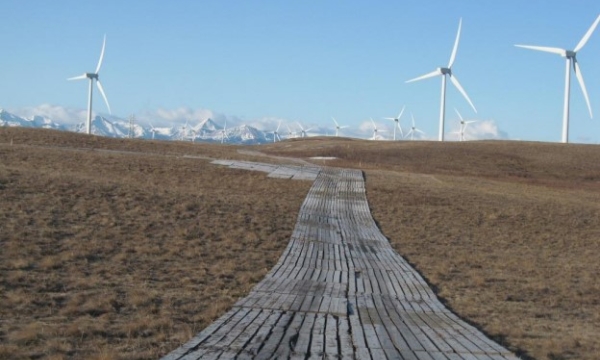Ressources de connaissances sur les terres humides
Ressource
Auteurs
Douglas Wilcox
Kurt Kowalski
Alexandra Bozimowski
We investigated wetland vegetation before, during, and after dike construction at the Metzger Marsh project in western Lake Erie, which was designed to restore a 300-ha wetland that had been degraded...
Ressource
Aquatic ecosystems provide many critical and economically valuable benefits, including drinking water, food, recreational opportunities, and water supply for irrigation and agriculture. However, the...
Ressource
Auteurs
Liam Heffernan
Cristian Estop-Aragonés
McKenzie Kuhn
Klaus Holger-Knorr
David Olefeldt
Permafrost thaw in northern peatlands causes collapse of permafrost peat plateaus and thermokarst bog development, with potential impacts on atmospheric greenhouse gas exchange. Here, we measured...
Ressource
Auteurs
Ariane Arias-Ortiz
Patricia Y. Oikawa
Joseph Carlin
Pere Masqué
Julie Shahan
Sadie Kanneg
Adina Paytan
Dennis D. Baldocchi
Support for coastal wetland restoration projects that consider carbon (C) storage as a climate mitigation benefit is growing as coastal wetlands are sites of substantial C sequestration. However, the...
Ressource
Auteurs
Kathleen Cleary
Zhengyu Xia
Zicheng Yu
Recent amplified climate warming in the Arctic has caused profound changes in terrestrial ecosystems, with the potential for strong feedback on climate change. Arctic tundra landscapes have developed...
Ressource
Auteurs
Olalekan Balogun
Richard Bello
Kaz Higuchi
Northern peatlands have been a persistent net sink of atmospheric carbon (C) due to the greater rates of gross primary production (GPP) compared to ecosystem respiration (ER). Global warming has...
Ressource
Data and information about Canadian peatlands are valuable to a wide range of knowledge users concerned about the future of peatlands in the country. The Can-Peat project is particularly interested in...
Ressource
Auteurs
Aboriginal Environmental Services Network
Even though training programs exist, one of the biggest hindrances to being involved in environmental services is still attributed to lack of training, which is why AESN focuses on piloting different...
Ressource
Auteurs
Shauna-Lee Chai
Zoey Wang
Tracy Howlett
Krista Tremblett
Michelle Hiltz
An Environmental Monitoring Technician Training Program Pilot for First Nations and Métis communities in the oil sands region of Alberta was initiated in 2015/16. The training program was designed...
Ressource
How do we meet the energy demand of an increasingly concentrated, mostly urban population in an environmentally sustainable manner? This document focuses on renewable energy and attempts to open this...





